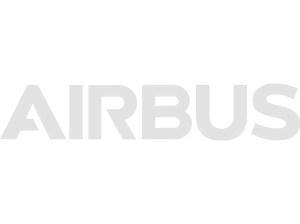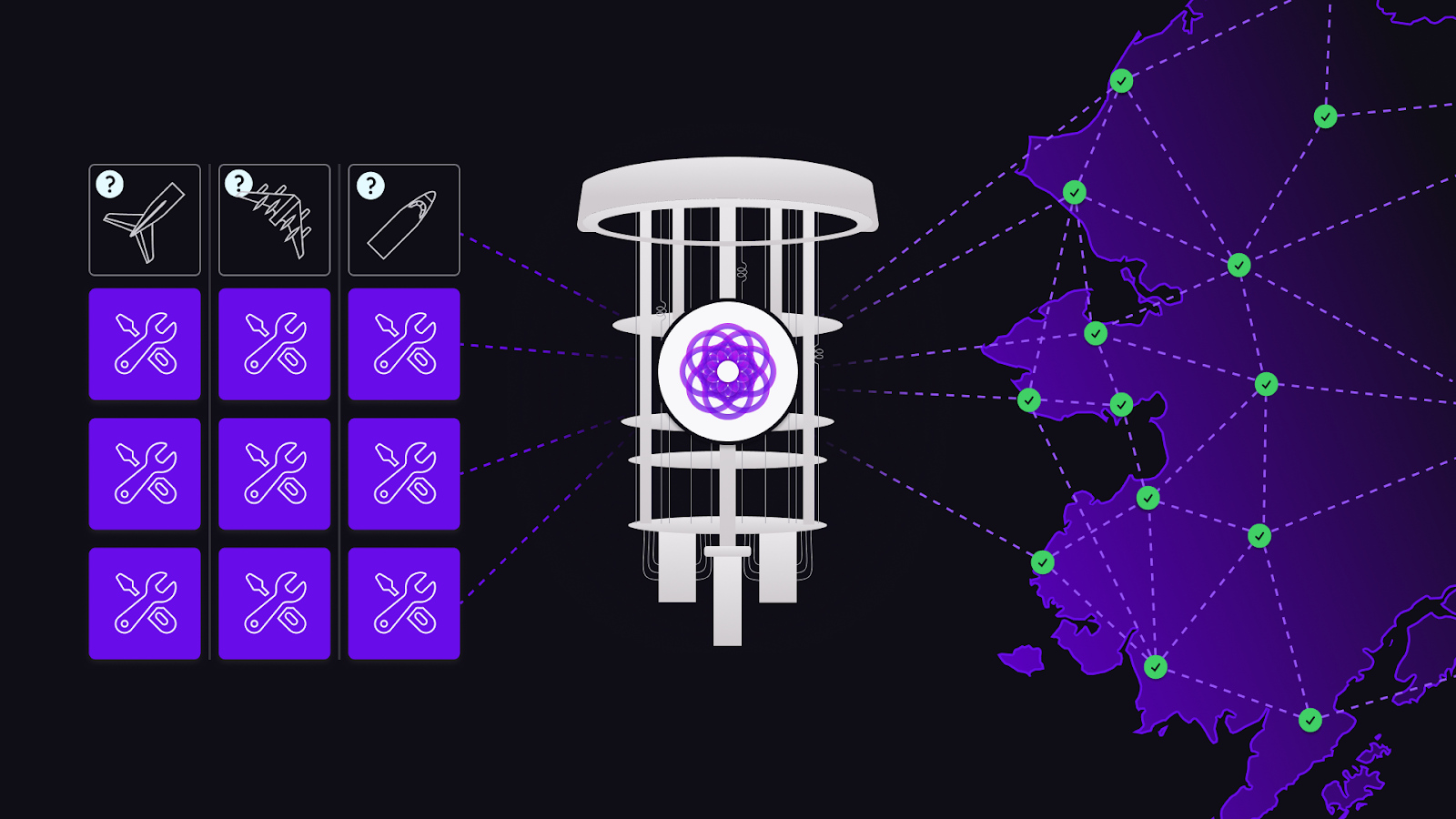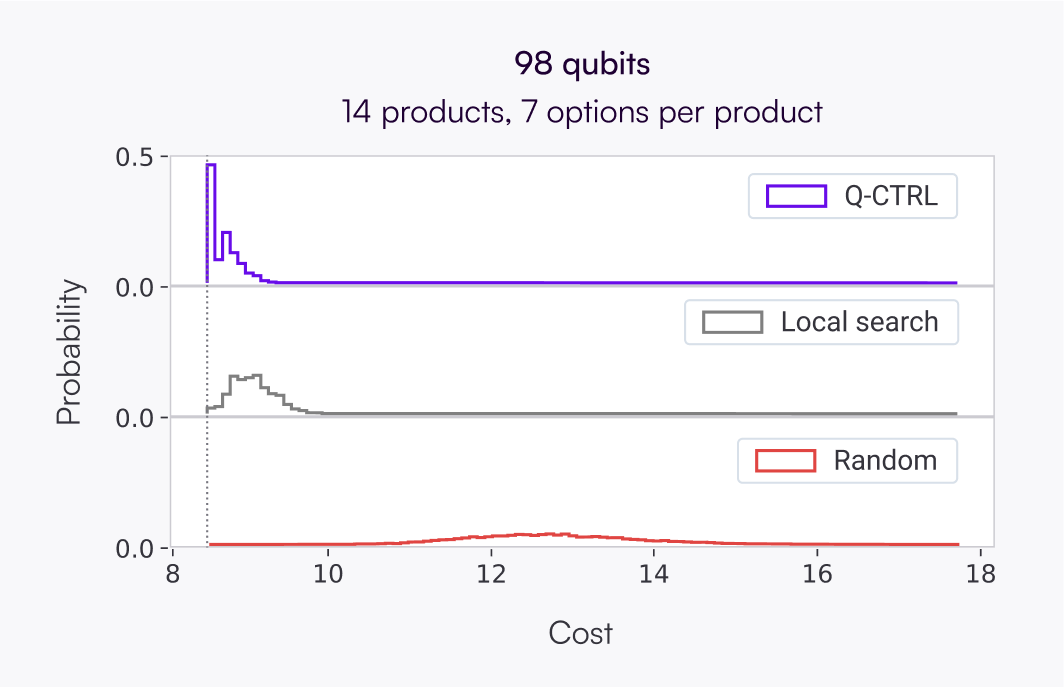Enabling efficient and robust supply chains


The challenge
Airbus needed to optimize a global aircraft supply chain under strict cost, capacity, and sustainability constraints that were highly challenging to solve with classical methods.
Impact
By 2028
our quantum optimizer is projected to deliver high-quality solutions for Airbus’s 48-product industrial problem, each with 5 candidate options per product.
The outcome
Airbus gained a validated path toward quantum-enhanced supply chains, with projected scalability to full industrial problems by 2028, improving resilience, efficiency, and sustainability.
The aviation sector operates some of the most complex global supply chains in the world. Building a single aircraft involves sourcing thousands of components from multiple suppliers and distributing manufacturing tasks across facilities in different countries. Optimizing this process to balance cost, sustainability, and resilience is a computational challenge of extraordinary scale.
Airbus, one of the world’s largest aircraft manufacturers, sought to understand how quantum computing could transform this challenge into an opportunity. As part of the Airbus BMW Group Quantum Mobility Quest, the company invited teams to apply quantum solutions to real-world supply chain optimization problems. Our focus is on reducing both costs and carbon emissions while ensuring resilience across Airbus’s highly distributed manufacturing network.
A challenge beyond classical computation
The optimization challenge was not a simplified model but a direct representation of Airbus’s industrial complexity. Obtaining an exact globally optimal solution would take tens of thousands of years using classical computation.
Imagine the complexity of an aircraft supply chain and its composite parts. Here we needed to address a supply chain optimization problem by allocating product components to manufacturing locations under specific constraints:
- Supply chain resilience: A dual-sourcing approach where each part is produced in two locations in different countries, ensuring production is not halted if the supply chain is disrupted in one location.
- Transportation feasibility: For each part, there must be a transportation route connecting the production and destination location.
- Location capabilities and capacities: Each location has different manufacturing resources capable of producing different parts. The profitability of each location must be guaranteed by location-specific minimum workshares and the individual maximum production capacity cannot be exceeded.
- Supplier workshare: Orders cannot fall below supplier-specific minimum workshare constraints. Dependence on each supplier is limited by individual maximum workshare constraints. Each supplier also has a target workshare that is considered ideal.
Each decision had cascading effects. A change to final assembly locations influenced supplier shares, shipping routes, and overall costs. The result was a highly interdependent problem that classical solvers struggled to address efficiently.

Applying a hybrid quantum optimization workflow
Since the full optimization problem is of a size and complexity that makes it impractical to address directly, we designed a computation workflow based on a Very Large-Scale Neighborhood (VLSN) search procedure. This means that the full supply chain problem is decomposed into a sequence of assignment subproblems to be solved iteratively. Even these subproblems are computationally intractable: we apply quantum optimization to pursue high-quality solutions quickly. Our approach is a heavily modified version of the Quantum Approximate Optimization Algorithm (QAOA), a key feature of our Fire Opal performance-management software.
We successfully deployed our quantum optimization at up to 98-qubit scales on hardware, achieving the optimal solution in every instance! Even at this large scale, our solver provides a high probability of measuring the optimal solution, and we expect high-quality results from our solver for even larger assignment subproblems.


We compare to a simple "greedy" local search: if the quantum hardware was overwhelmed by errors, our solver would match this, and therefore we can see that our custom algorithm and error-suppression pipeline produce strong performance on the hardware.
We then matched the quantum solver’s resource requirements with IBM’s and IonQ’s published hardware roadmaps. Based on these roadmaps, we project that our quantum optimizer will be able to obtain high-quality solutions for our target of a 48-product real industrial problem, considering 5 candidate options per product, in 2028.

Transformational results for the industry
This work set a new milestone: the world’s largest successful quantum optimization of a constrained problem on gate-based quantum computers. The results showed that the limiting factor for this use case is no longer algorithmic quality but hardware scale. As devices grow in capability, Q-CTRL’s quantum optimization will be ready to deliver industrially relevant solutions.
For Airbus, the implications are significant. Optimized supply chains can reduce costs, increase resilience, and cut carbon emissions, directly contributing to the aviation industry’s sustainability goals. For the broader transport and logistics sector, this demonstration proves that quantum computing is not a distant promise but a near-term solution to critical challenges.
The Q-CTRL difference
At the core of this achievement was our Fire Opal software. By combining advanced quantum optimization algorithms with AI-driven error suppression, Fire Opal turned fragile quantum hardware into a dependable tool for solving industry-scale problems.
This capability reflects our mission to make quantum technology useful. By enabling real-world breakthroughs like Airbus’s supply chain optimization, we help organizations unlock value that classical methods cannot deliver.
Towards quantum-enhanced supply chains
Airbus’s challenge highlighted the complexity and importance of supply chain optimization in modern aviation. With Q-CTRL’s Fire Opal, quantum solutions moved from theory to practical demonstration, showing that real industrial value is within reach.
We are excited to continue supporting aviation and logistics leaders as they prepare for a quantum-enabled future. By bringing together advanced software, credible results, and a focus on customer outcomes, Q-CTRL is helping to build efficient, resilient, and sustainable supply chains.
Contact our expert team today to discuss how we can help solve your optimization challenges.








